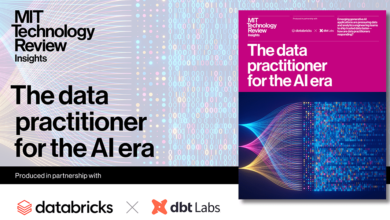Generative AI and LLMs Empowering Immersive and Personalised Product Discovery

By Sriram PH
The retail industry is undergoing a digital transformation, driven by changing consumer preferences, expectations, and behaviours. The COVID-19 pandemic has accelerated this shift, as more consumers opt for online shopping, delivery, and curbside pickup options. According to a report by eMarketer, global e-commerce sales are expected to reach $6.38 trillion by 2024, up from $4.28 trillion in 2020. However, the online shopping experience still lacks the personalization, interactivity, and immersion that consumers enjoy in physical stores. This creates a challenge for retailers, who need to find innovative ways to attract, engage, and retain customers in the digital space.
This is where Generative AI and LLMs (Large Language Models) come in. Generative AI is a branch of artificial intelligence that can create novel and realistic content, such as text, images, audio, and video, based on existing data and inputs. LLMs are a type of Generative AI that can understand and generate natural language, such as sentences, paragraphs, and dialogues, based on massive amounts of text data. Generative AI and LLMs have the potential to revolutionise the online retail industry, by enabling immersive and personalised product discovery for customers.
What is Generative AI and LLMs?
Generative AI is a branch of AI that focuses on creating novel and realistic content, such as images, videos, text, music, and more. Generative AI uses deep learning models, such as generative adversarial networks (GANs), variational autoencoders (VAEs), and transformers, to learn from large amounts of data and generate new samples that resemble the original data distribution.
LLMs are a type of generative AI that specialises in natural language processing (NLP). LLMs are trained on a massive corpora of text, such as books, articles, social media posts, and more, and can generate coherent and fluent text on various topics and styles. LLMs can also perform other NLP tasks, such as summarisation, translation, question answering, and sentiment analysis, by using different input and output formats.
Some examples of generative AI and LLMs are:
- StyleGAN: A GAN model that can generate high-quality and diverse images of faces, animals, landscapes, and more, with controllable attributes, such as age, gender, hair style, and expression.
- OpenAI DALL-E: A transformer model that can generate images from text descriptions, such as “a cat wearing a suit and tie” or “a snail made of harp”.
- GPT-3: A transformer model that can generate text on any topic, given a prompt, such as “write a review of the latest iPhone” or “write a short story about a dragon”.
- Jukebox: A transformer model that can generate music with lyrics, given a genre, artist, and mood.
How are Generative AI and LLMs Empowering Product Discovery?
Product discovery is the process of finding and selecting the best products that match the customer’s needs, preferences, and expectations. Product discovery is a crucial aspect of e-commerce, as it influences the customer’s satisfaction, loyalty, and retention. However, product discovery can also be challenging, as customers have to navigate through a large and diverse catalogue of products, often with limited information and guidance.
Generative AI and LLMs can enhance product discovery by creating immersive and personalised experiences for customers, such as:
- Visual Search: Customers can use images, instead of keywords, to search for products that match their visual preferences. For example, a customer can upload a photo of a dress they like and find similar products in the online store. Generative AI can also augment the visual search results by generating new images of products that are not available in the catalogue, but are relevant to the customer’s query.
- Conversational Agents: Customers can interact with natural language agents, such as chatbots and voice assistants, to find and buy products. For example, a customer can ask a chatbot to recommend a laptop that suits their budget and needs, and the chatbot can generate a list of options with pros and cons, and guide the customer through the purchase process. LLMs can enable conversational agents to understand the customer’s intent, context, and emotions, and generate natural and engaging responses.
- Personalised Recommendations: Customers can receive tailored suggestions of products that match their interests, preferences, and behaviour. For example, a customer can receive a personalised newsletter with curated products based on their browsing history, purchase history, and feedback. Generative AI and LLMs can enable personalised recommendations by analysing the customer’s data and generating relevant and diverse content that appeals to the customer.
- Visualisation of Products: Customers can view and explore products in realistic and interactive ways, such as 3D models, augmented reality, and virtual reality. For example, a customer can see how a product would look in their own environment, such as a sofa in their living room, or a pair of shoes on their feet. Generative AI and LLMs can enable visualisation of products by creating high-quality and customisable representations of products that enhance the customer’s perception and confidence.
Why are Generative AI and LLMs Enhancing Customer Experience?
Customer experience is the overall perception and feeling that a customer has about a brand, product, or service, based on their interactions and outcomes. Customer experience can be measured by various metrics, such as net promoter score (NPS), customer satisfaction score (CSAT), and customer effort score (CES).
Generative AI and LLMs can enhance customer experience by providing:
- Immersive Experience: Customers can experience products in a more realistic and interactive way, using visual, auditory, and haptic feedback. For example, a customer can listen to a sample of a song or a podcast, or feel the texture of a fabric, before buying it.
- Personalised Experience: Customers can receive products that are customised and tailored to their individual needs, preferences, and expectations. For example, a customer can order a personalised cake with their name and favourite flavour, or a personalised book with their own story and characters.
- Empowered Experience: Customers can have more control and choice over their product discovery and purchase journey. For example, a customer can filter, sort, and compare products based on various criteria, such as price, quality, ratings, and reviews, or create their own products using generative tools.
Recent Stats on Generative AI and LLMs for E-Commerce
Here are some recent stats and numbers that illustrate the impact and potential of generative AI and LLMs for e-commerce:
- According to a report by Accenture, generative AI and LLMs can impact 40% of all working hours across all industries, by transforming 65% of the time spent on language tasks into more productive activity.
- According to a report by Turing, generative AI and LLMs can create up to $13.5 trillion of additional economic activity by 2030, by enabling new products, services, and business models.
- According to a report by Statista, the global chatbot market, which is one of the applications of generative AI and LLMs, is expected to grow from $2.6 billion in 2019 to $9.4 billion in 2024, at a compound annual growth rate (CAGR) of 7%.
Conclusion
Generative AI and LLMs are transforming the e-commerce industry, by empowering immersive and personalised product discovery. These technologies can offer significant advantages for e-commerce businesses and customers, by enhancing the creativity, efficiency, satisfaction, and revenue, of the online shopping experience. However, these technologies also present some challenges, such as data quality, ethical implications, and regulatory compliance, which need to be addressed and resolved, to ensure the responsible and sustainable use of generative AI and LLMs for e-commerce.
Generative AI and LLMs are opening up a new world of possibilities for e-commerce, where the products are not only created and discovered, but also co-created and co-discovered, by the collaboration of humans and machines. This is a future that is exciting, inspiring, and rewarding, for both the e-commerce businesses and customers.
(The author is Sriram PH, CEO & Co-Founder, DaveAI, and the views expressed in this article are his own)



